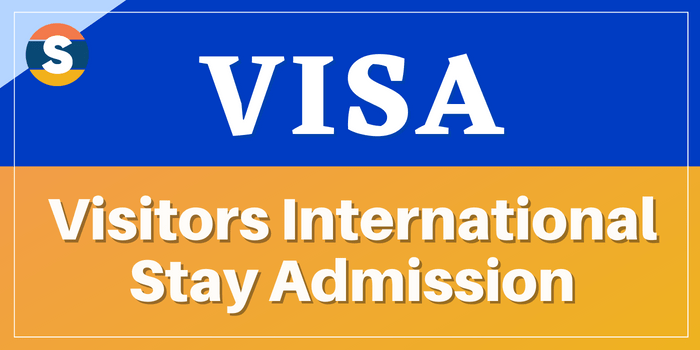VISA Full Form

What is the Full form of VISA
What is a VISA and the Benefits of a VISA?
What is VISA – A travel visa, which is an official document issued by a government that permits a person to enter, exit, or transit through a country, is referred to as a “visa” in the context of a passport. The benefits of having a visa in your passport include the freedom to travel and conduct business in that country, as well as entry to the country and stay in that nation for a set period of time. Also, having a valid visa in your passport can make getting future visas and travel documents easier.
VISA Full Form
VISA Full Form – The Full form of a VISA in the Context of Passports is “Visitors International Stay Admission”. A VISA is considered one of the most important documents when a person is traveling to some other country. VISA means charta visa, in Latin words, it means “document that has been seen“. It is a document issued in the form of a stamp marked on the passport of a person who wants to visit another country.
It is the permission given by the government of a country to a person to visit and stay in the country for a specified period of time. The approval of the immigration officials of the country is also required to enter the country at the entry point apart from VISA only. VISA can be of different types on the basis of the purpose of travel, some common types of VISA are Tourist VISA, Student VISA, Employment VISA, Medical VISA, etc. A tourist VISA is required when a person wants to visit a country for tourism such as sightseeing, recreation, or to meet relatives and friends.
A student VISA is required when a student wants to pursue higher education in another country. An employment VISA is required when a person wants to work in a country and a medical VISA is required when a person is seeking medical treatment in a hospital of a country.
Why do we need VISA?
A visa is a document that allows a person to enter, exit, or stay in a country for a certain period of time. It is issued by the government of the country and serves as permission for the person to travel to or stay in that country. Visas are typically required for people who are not citizens or permanent residents of the country they wish to enter. They are used as a way for governments to control and monitor the movement of people across borders.
Advantages of Having a VISA:
- Legal Entry: A visa allows you to enter a country legally and stay for a specific period of time, as determined by the visa.
- Work or Study: Some visas, such as work or student visas, allow individuals to live and work or study in a country for a specific period of time.
- Business Opportunities: A visa allows business people to enter a country to establish or develop business relationships, attend conferences or trade fairs, or invest in the country.
- Tourism: A visa allows tourists to enter a country and experience its culture, history, and attractions.
- Family Reunification: Some visas, such as family reunification visas, allow individuals to live with their family members in a foreign country.
- Long-term Residence: Some visas, such as permanent residence visas, allow individuals to live in a country indefinitely.
- Protection: Visa can provide a form of protection for individuals fleeing persecution or conflict in their home countries.
- Economic Growth: Visa can also be beneficial for countries in terms of economic growth and development, as it allows for the movement of skilled labor and capital.
Various Full Forms of VISA
- Visa International Service Association
- Visa Issuance and Clearance Authorization
- Vital Information System and Analysis
- Virtual Instrument Systems Architecture
- Visa Infinite Superior Amenities
- Visual Inspection and Sorting Automation
- Visa Information System for Asia
- Visa Information System for Africa
- Visa Information System for the Americas
- Vehicle Inspection and Safety Association
Please note that the full form of a VISA may vary depending on the context and the organization.
Also, see:
- FIR Full Form, What is the Full Form of FIR?
- EDGE Full Form, What is the Full Form of EDGE?
- RPM Full Form, What is the Full Form of RPM?
How visa help sirak running would Thank you.